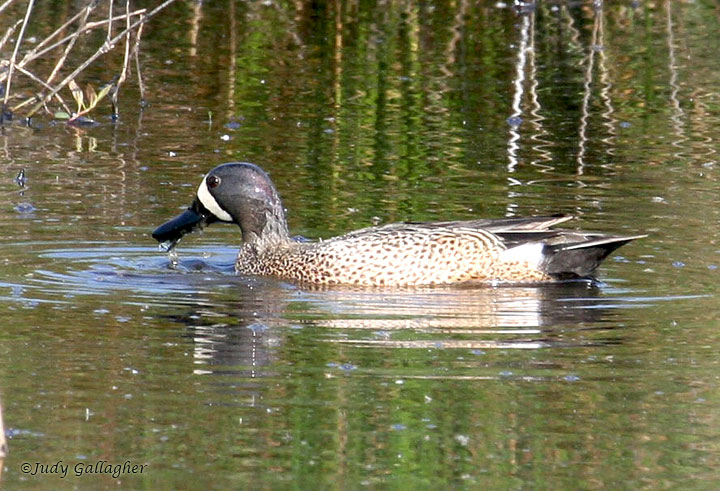
|
Blue-winged Teal If you see the blue-winged teal swimming or waddling on the shore, you might wonder how it got its name, since most of its visible feathers are brown and gray. But when it takes flight, the reason for the name becomes evident. The bird’s wing coverts (feathers from shoulder to wrist) are light blue, with inner flight feathers (remiges) an iridescent green. In breeding season, the male has a grayish-blue head and an arresting white crescent in front of his eye. The bird migrates over great distances and, while it is the last to fly north in the spring, it is one of the first to fly south in the fall. Here in the US, they will overwinter in peninsular Florida and southern Texas. The size of blue-winged teal population is second only to the mallard. In 2009, the breeding population was 7.4 ± 0.4 million birds. However, of the dabbling ducks, they have the highest mortality rate, believed to be a result of over-ocean migration and hunting. Blue-winged teal prefer the northern prairies as a breeding site and generally choose wetland areas such as marshes for their nests. Females are sensitive to wetland conditions and will change their breeding sites from year to year. The nest is generally built on the ground, made of grass and plants. A clutch is usually 8-11 eggs. Females incubate the eggs for about 24 days and care for the young, which leave the nest rather quickly after hatching, becoming independent in 35 to 44 days after they hatch. These ducks eat vegetation (pond weeds, algae), seeds, aquatic insects and invertebrates, gathering food floating on the surface of the water and also tipping up their tails (up-ending themselves) to procure food from below the water. Males whistle “tsee-tsee” both in flight and on the water; the females’ vocalization is a squeak. |
Home | Upcoming Events | About Us | Resource Issues | News | Local Contacts Maps | Photos | Publications | Youth Education | FAQ's | Links | Membership |





